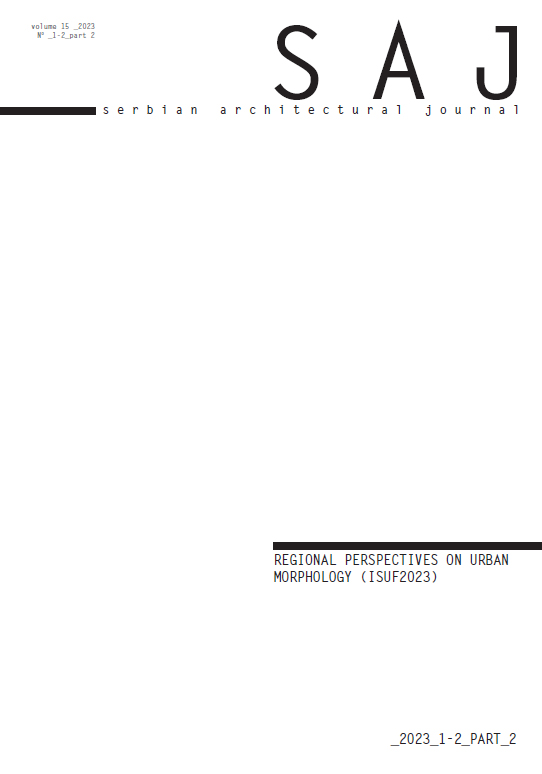G.STRAPPA, M. IEVA, N. MARZOT
THE ITALIAN SCHOOL OF PROCESS MORPHOLOGY.
ROOTS, METHODS AND FUTURE DEVELOPMENTS
In SAJ, s e r b i a n a r c h i t e c t u r a l j o u r n a l, VOL.15, 2023 Editor Vladan Djokić

A. THE ORIGINS OF THE MORPHOLOGICAL STUDIES IN ITALY
Giuseppe Strappa
Particularly in the current conditions, I believe, it could be useful to go back to reflecting on the roots of morphological studies in Italy as they are, in fact, the evidence of a concrete approach to the architectural design based on logical and didactically transmissible bases. These studies were aimed, especially in the Roman School, at the formation of general and shared methods derived from the reading of built reality and were aimed at the positive study of how it could be transformed. Studying them is useful, precisely in a period like the present one in which, on the one hand, morphology studies are gradually assuming an increasingly abstract and independent drift from design and, on the other, professional practice is aimed, instead, at the marketing of architecture through interpretations based on the perception and spectacular communication of the results.
The studies from which the researches on the formative processes of the urban form in the Italian area have been developed are above all known, abroad, through the texts of Gianfranco Caniggia. It is also known that these derive from the teachings of Saverio Muratori, whose texts, however, are less known for having never been translated into English. Even less known is the fact that the origin of this school of thought dates back much earlier, at least to the interwar period and to the studies of innovators such as Gustavo Giovannoni, Giovan Battista Milani, Enrico Calandra and others. The common thread that binds these researches, developed largely through teaching in the Faculty of Architecture, is the “reading” of the built reality which not only has the project as its aim but, in many respects, is itself a project.
READ FULL TEXT origine UM in Italia SAJ_15_02_PRINT